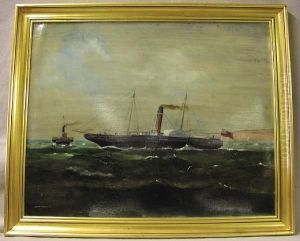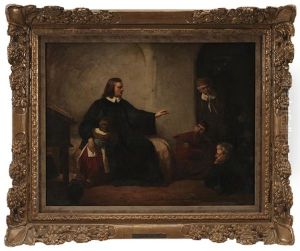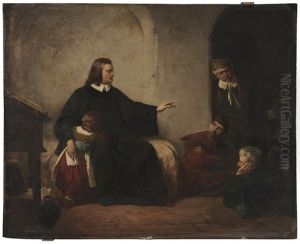George Frederick Folingsby Paintings
George Frederick Folingsby was an Irish-born artist who became a significant figure in the Australian art scene during the late 19th century. Born in Tullamore, Ireland, in 1828, Folingsby initially embarked on his art education in Dublin before moving to the more influential art capitals of Europe, including Munich, where he significantly developed his skills and was influenced by the German romantic and realist traditions. His early work primarily consisted of portraits and historical scenes, genres in which he demonstrated considerable skill and sensitivity.
Folingsby moved to Australia in 1882, a period when the Australian art world was burgeoning and seeking a distinct identity. Settling in Melbourne, he quickly became an influential figure, not only as an artist but also as an educator. In 1886, he was appointed the Master of the School of Painting at the National Gallery of Victoria Art School, a position he held until his death. This role placed him at the forefront of art education in Australia, where he was instrumental in shaping the development of young Australian artists. Through his teaching, Folingsby emphasized the importance of technical skill, academic painting, and the study of European masters, which he believed were crucial for the foundation of a strong national art scene.
His impact on Australian art was profound, with Folingsby advocating for a professional approach to art education and practice. Under his guidance, the National Gallery School became a leading institution, attracting students who would go on to become prominent figures in Australian art. His own works during his time in Australia continued to reflect his European training, with a focus on historical and biblical subjects, though he also explored themes more directly related to Australian society and landscape.
George Frederick Folingsby's contribution to Australian art was cut short by his death in 1891. However, his legacy lived on through his students and the standards he set for art education and practice in Australia. Today, Folingsby is remembered as a pivotal figure in the Australian art community, bridging European artistic traditions and the burgeoning cultural identity of Australia in the late 19th century.





